Abstract
This is the first report that Agrobacterium tumefaciens can fix nitrogen in a free-living condition as shown by its abilities to grow on nitrogen-free medium, reduce acetylene to ethylene, and incorporate 15N supplied as 15N2. As with most other well-characterized diazotrophic bacteria, the presence of NH4+ in the medium and aerobic conditions repress nitrogen fixation by A. tumefaciens. The system requires molybdenum. No evidence for nodulation was found with pea, peanut, or soybean plants. Further understanding of the nitrogen-fixing ability of this bacterium, which has always been considered a pathogen, should cast new light on the evolution of a pathogenic versus symbiotic relationship.
Full text
PDF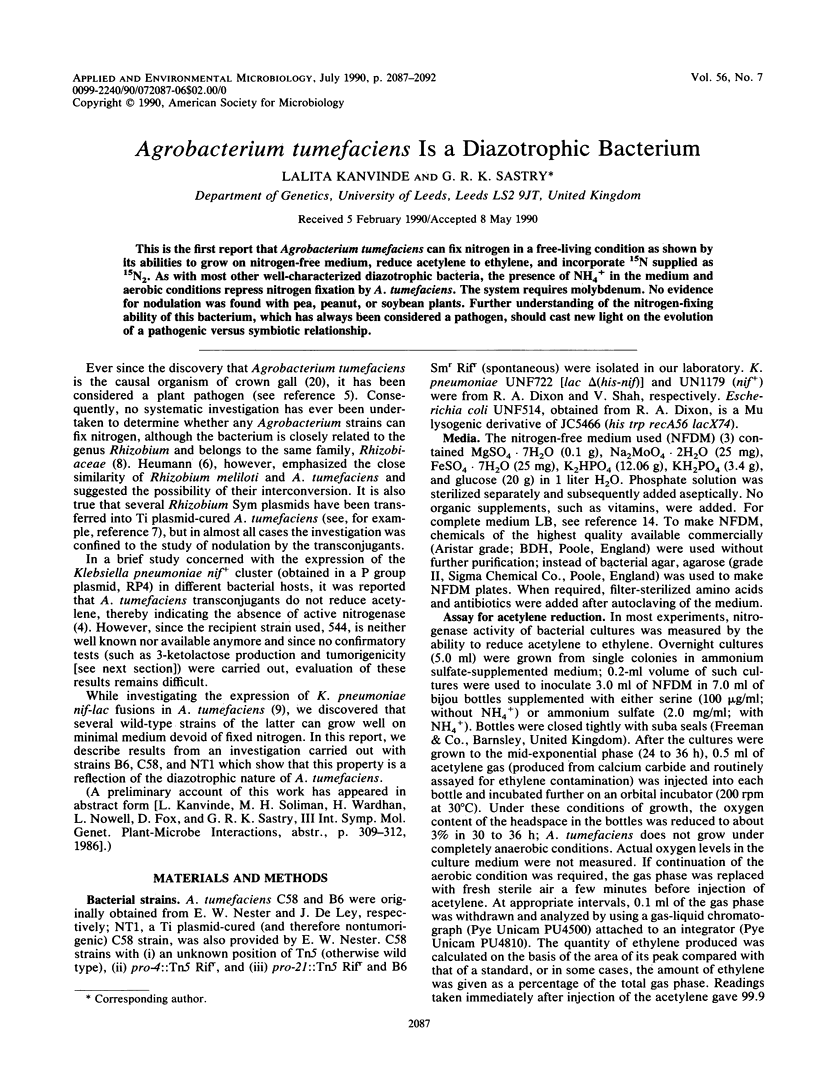
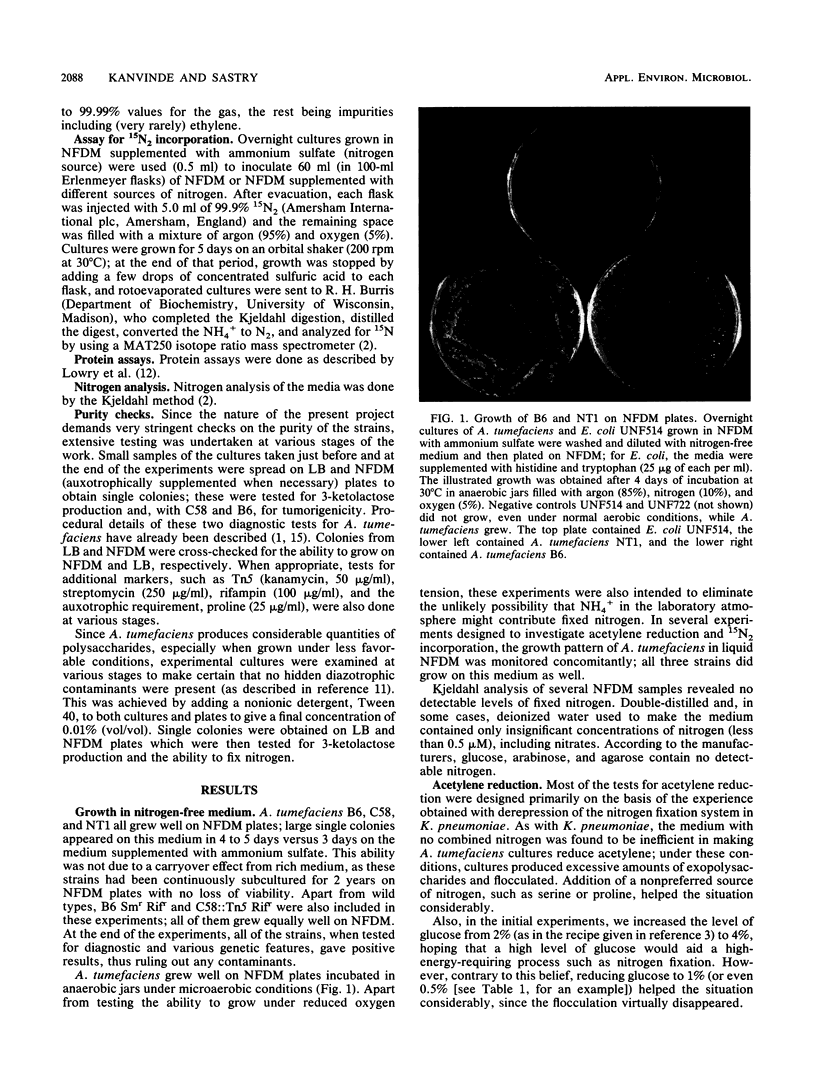
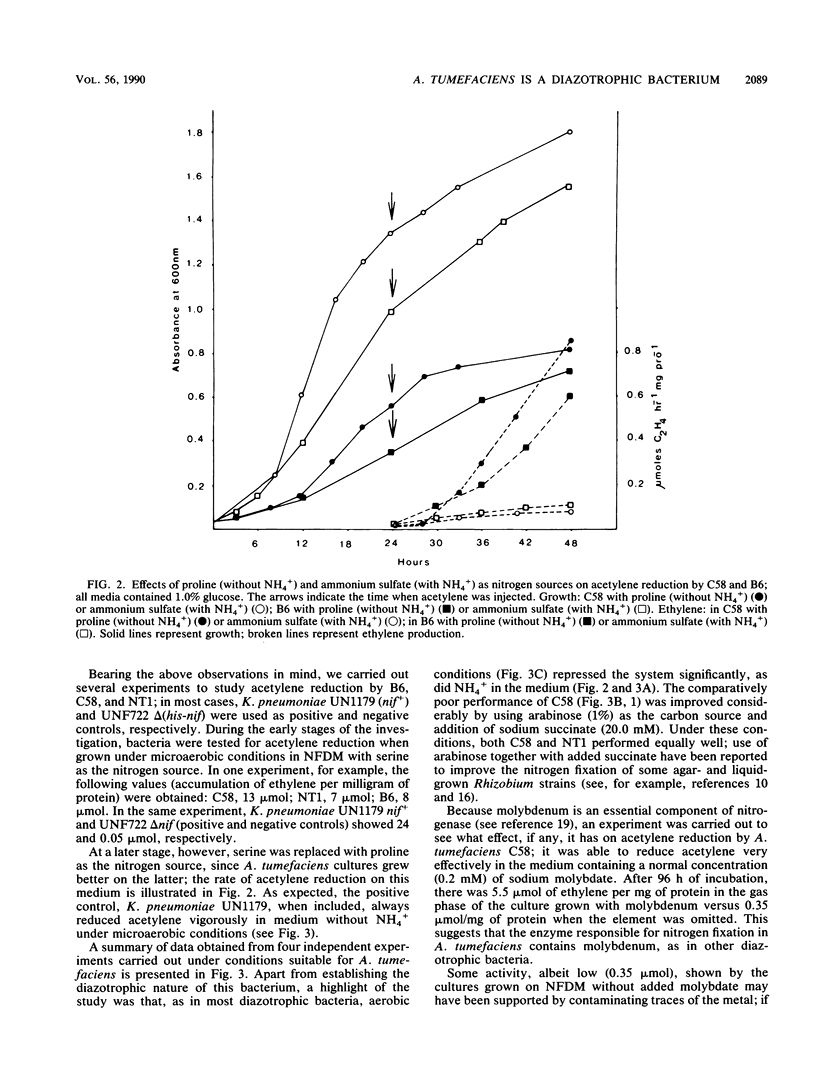
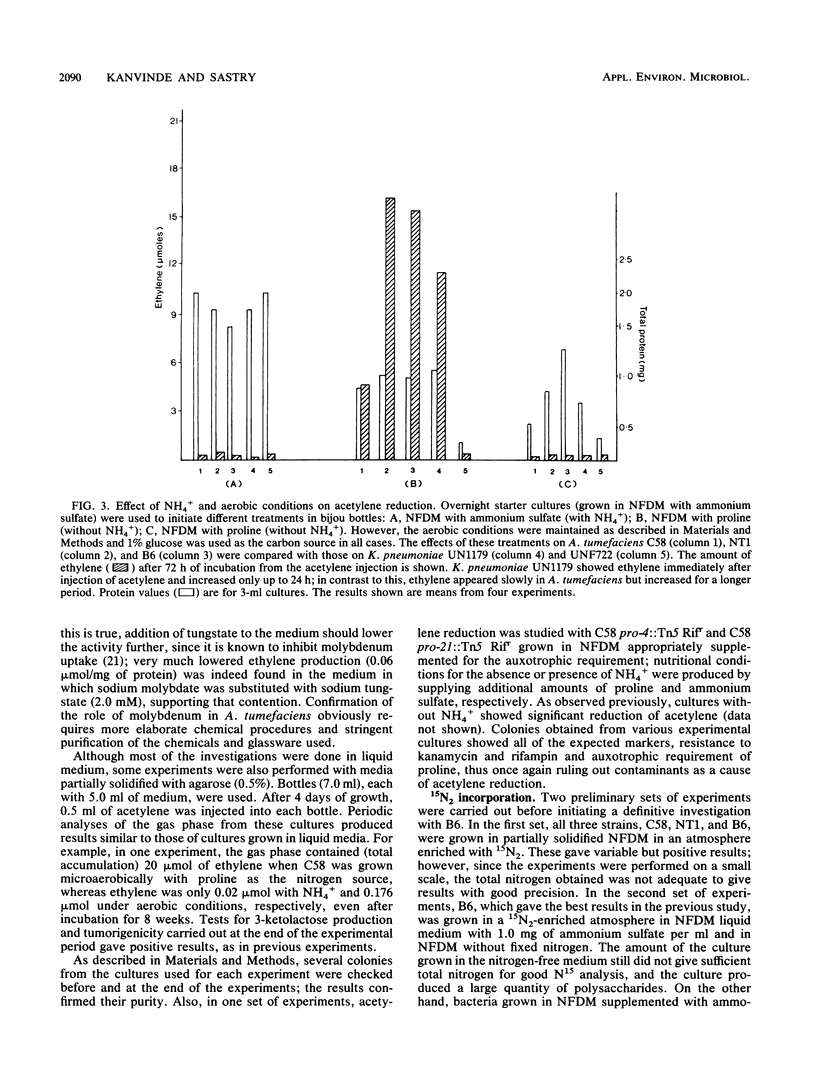
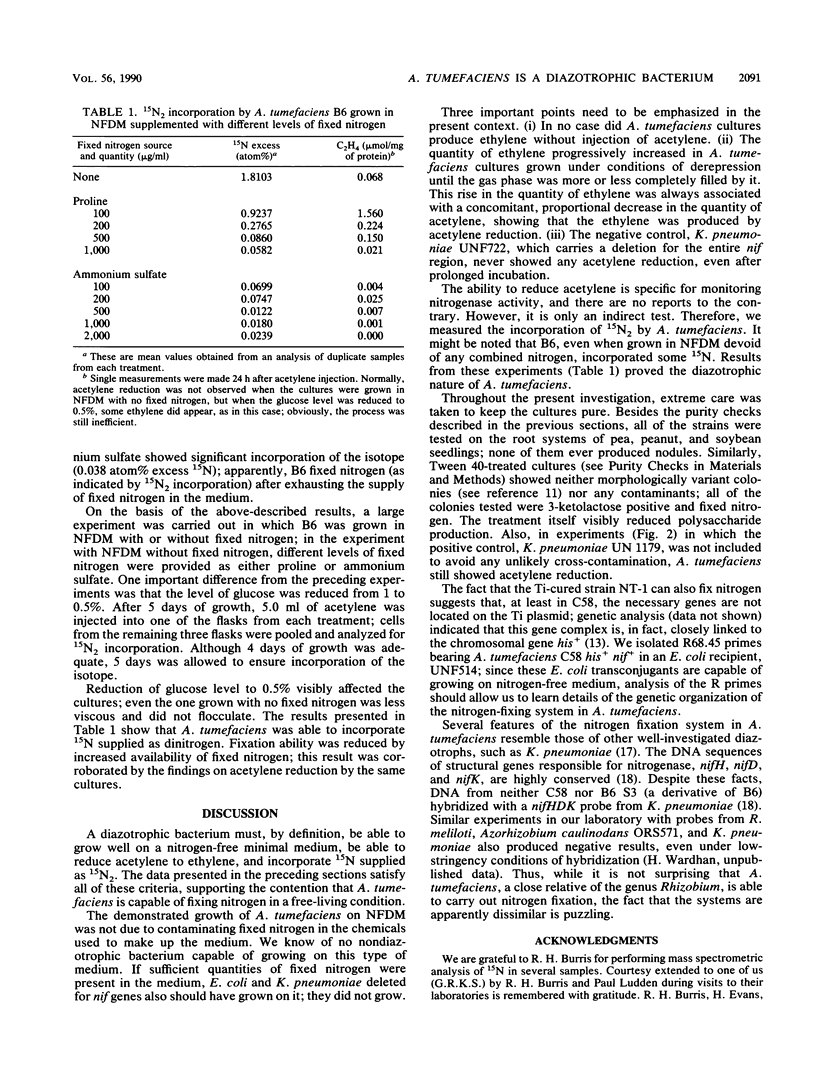
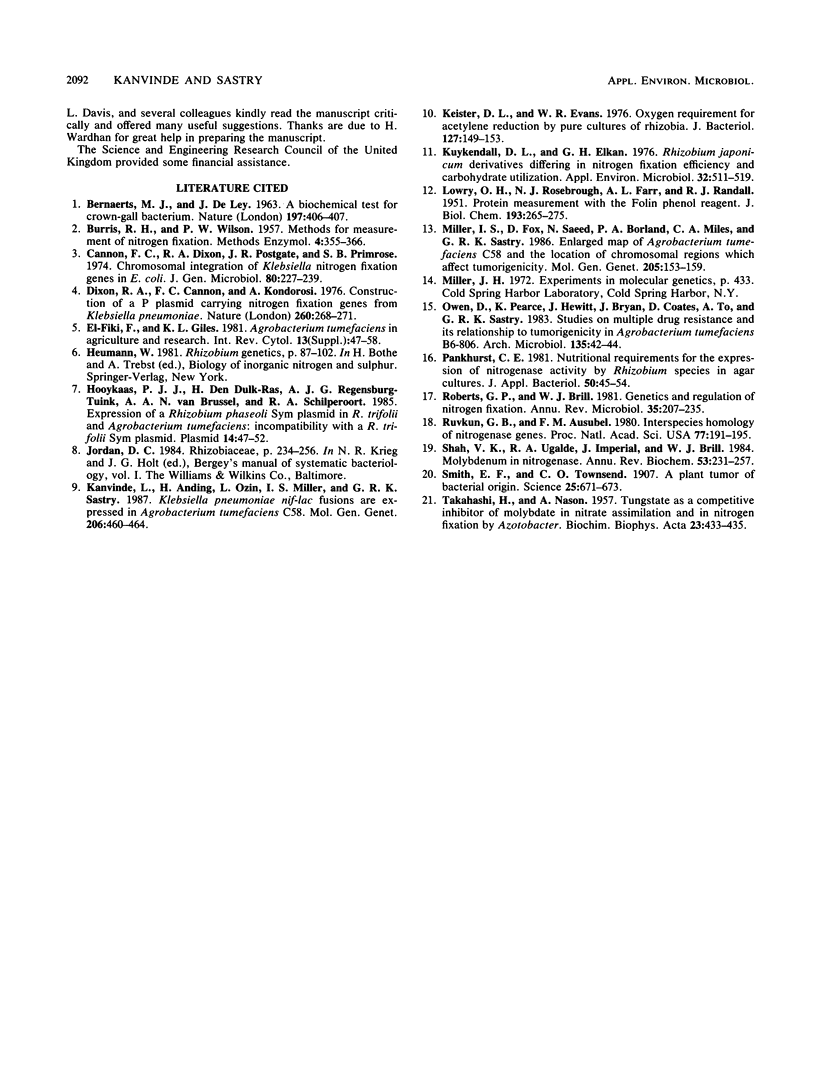
Images in this article
Selected References
These references are in PubMed. This may not be the complete list of references from this article.
- Cannon F. C., Dixon R. A., Postgate J. R., Primrose S. B. Chromosomal integration of Klebsiella nitrogen fixation genes in Escherichia coli. J Gen Microbiol. 1974 Jan;80(1):227–239. doi: 10.1099/00221287-80-1-227. [DOI] [PubMed] [Google Scholar]
- Dixon R., Cannon F., Kondorosi A. Construction of a P plasmid carrying nitrogen fixation genes from Klebsiella pneumoniae. Nature. 1976 Mar 18;260(5548):268–271. doi: 10.1038/260268a0. [DOI] [PubMed] [Google Scholar]
- Hooykaas P. J., den Dulk-Ras H., Regensburg-Tuïnk A. J., van Brussel A. A., Schilperoort R. A. Expression of a Rhizobium phaseoli Sym plasmid in R. trifolii and Agrobacterium tumefaciens: incompatibility with a R. trifolii Sym plasmid. Plasmid. 1985 Jul;14(1):47–52. doi: 10.1016/0147-619x(85)90031-9. [DOI] [PubMed] [Google Scholar]
- Kanvinde L., Anding H., Ozin L., Miller I. S., Sastry G. R. Klebsiella pneumoniae nif-lac fusions are expressed in Agrobacterium tumefaciens C58. Mol Gen Genet. 1987 Mar;206(3):460–464. doi: 10.1007/BF00428886. [DOI] [PubMed] [Google Scholar]
- Keister D. L., Evans W. R. Oxygen requirement for acetylene reduction by pure cultures of rhizobia. J Bacteriol. 1976 Jul;127(1):149–153. doi: 10.1128/jb.127.1.149-153.1976. [DOI] [PMC free article] [PubMed] [Google Scholar]
- Kuykendall L. D., Elkan G. H. Rhizobium japonicum derivatives differing in nitrogen-fixing efficiency and carbohydrate utilization. Appl Environ Microbiol. 1976 Oct;32(4):511–519. doi: 10.1128/aem.32.4.511-519.1976. [DOI] [PMC free article] [PubMed] [Google Scholar]
- LOWRY O. H., ROSEBROUGH N. J., FARR A. L., RANDALL R. J. Protein measurement with the Folin phenol reagent. J Biol Chem. 1951 Nov;193(1):265–275. [PubMed] [Google Scholar]
- Roberts G. P., Brill W. J. Genetics and regulation of nitrogen fixation. Annu Rev Microbiol. 1981;35:207–235. doi: 10.1146/annurev.mi.35.100181.001231. [DOI] [PubMed] [Google Scholar]
- Ruvkun G. B., Ausubel F. M. Interspecies homology of nitrogenase genes. Proc Natl Acad Sci U S A. 1980 Jan;77(1):191–195. doi: 10.1073/pnas.77.1.191. [DOI] [PMC free article] [PubMed] [Google Scholar]
- Shah V. K., Ugalde R. A., Imperial J., Brill W. J. Molybdenum in nitrogenase. Annu Rev Biochem. 1984;53:231–257. doi: 10.1146/annurev.bi.53.070184.001311. [DOI] [PubMed] [Google Scholar]
- Smith E. F., Townsend C. O. A PLANT-TUMOR OF BACTERIAL ORIGIN. Science. 1907 Apr 26;25(643):671–673. doi: 10.1126/science.25.643.671. [DOI] [PubMed] [Google Scholar]
- TAKAHASHI H., NASON A. Tungstate as competitive inhibitor of molybdate in nitrate assimilation and in N2 fixation by Azotobacter. Biochim Biophys Acta. 1957 Feb;23(2):433–435. doi: 10.1016/0006-3002(57)90351-7. [DOI] [PubMed] [Google Scholar]



